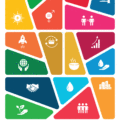Modeling water to quench the future’s thirst

© Pix569 | Dreamstime
Population growth and continued economic development worldwide, especially in developing regions, are driving an unsustainable increase in water demand. This demand is estimated to increase significantly under the global, regional, and local impacts of climate change on water availability and its distribution.
Ensuring that uncertain supply can meet growing demand without compromising the sensitive aquatic environments from which water is derived, is a huge challenge that will require strategies and policies informed by science. The new large-scale IIASA hydrological and water resources model ̶ the Community Water Model (CWatM) ̶ can aid a more accurate assessment of water supply and demands from both people and the environment.
The model can simulate the movement, distribution, and management of water both globally and regionally, evaluating water availability both in terms of water demand and environmental needs. It includes an accounting of how future water demand will evolve in response to socioeconomic changes, and how water availability will be influenced by climate change. The integrated modeling framework considers water demand from agriculture, domestic needs, energy, industry, and the environment. Because the modeling framework is general, it can also be adapted to address new interdisciplinary research questions. This opens the door to many potential applications to explore connections between the nexus aspects of energy, land, and water.
The model’s novelty manifests in combining existing good practice in various scientific communities beyond hydrology itself, rather than providing entirely new concepts for modeling hydrological and socioeconomic processes. It has a modular structure that is open source and uses state-of-the-art data storage protocols as input and output data, while being community-driven to promote the team’s work among the wider water community. It is flexible enough to change between scales, to be integrated with water quality and the hydroeconomy, and to be linked with other IIASA models.
The Community Water Model will continue to be developed, incorporating more features to enhance the simulation of water availability in agricultural, urban, and groundwater contexts. The model is the first step towards developing an integrated modeling framework, encompassing both water supply infrastructure and demand management, and providing vital information to decision- and policymakers.





